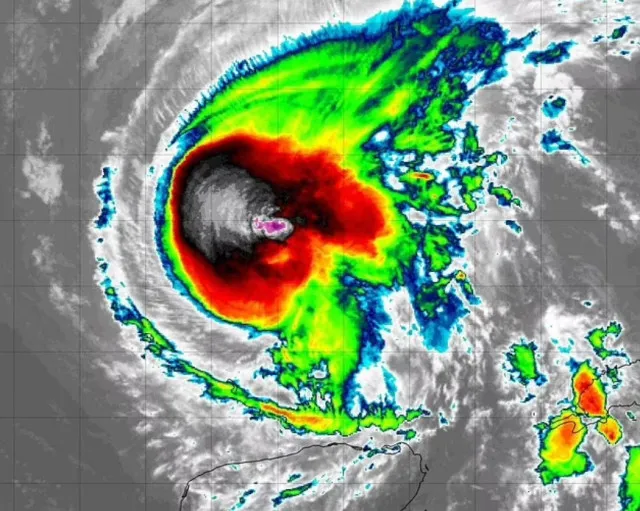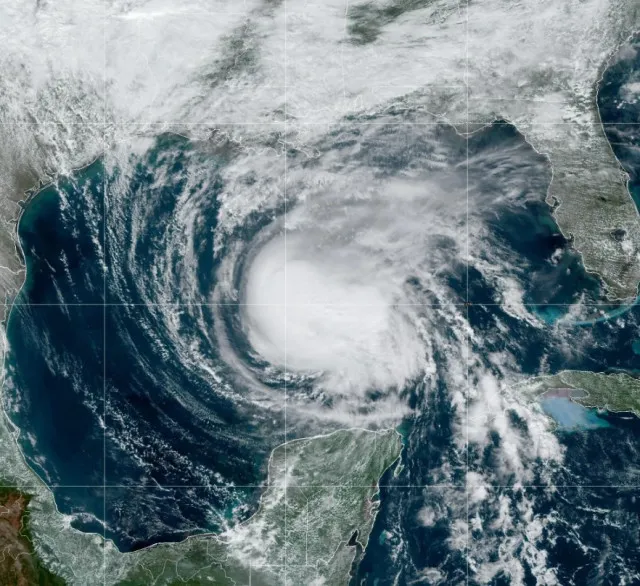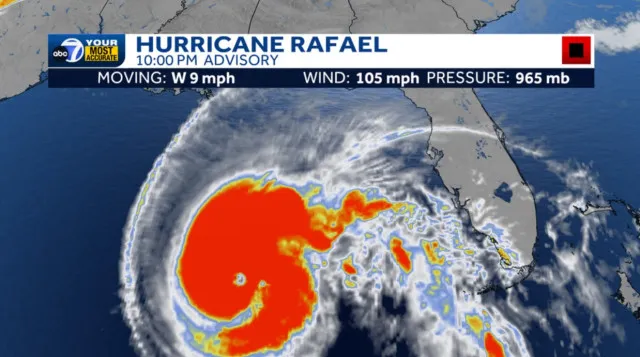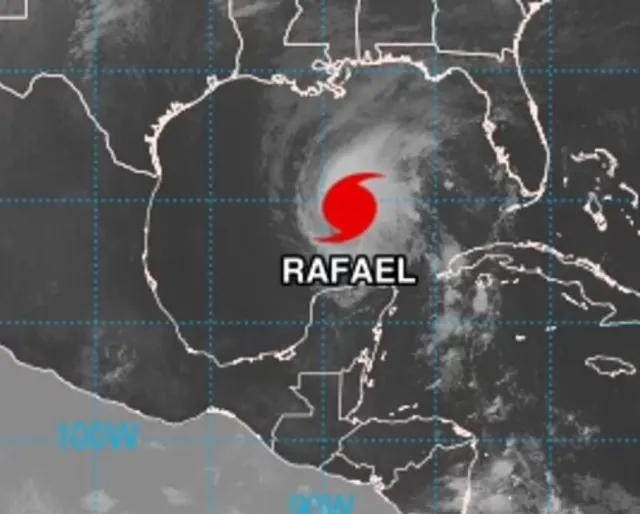Florida warns of Hurricane Rafael, expecting life-threatening conditions as the storm approaches, urging residents to prepare for impact.
Current status of Hurricane Rafael
As of the latest update, Hurricane Rafael is classified as a Category 2 storm.
It is currently tracking northwestward toward Texas, with its center over the central Gulf of Mexico.
The National Hurricane Center (NHC) in Miami has stated that the storm remains a powerful, compact hurricane.
It is generating swells that will create hazardous surf and rip current conditions along Florida’s coastline.

Weather impact and forecast for the Gulf Coast
Southwesterly winds are bringing scattered showers and isolated thunderstorms to the east-central and southeastern Gulf, including Key West.
While Rafael’s path remains uncertain, forecast models suggest a possible shift, decreasing the likelihood of a U.S. landfall, though its exact trajectory is still unclear.
The NHC forecasts that Rafael will pass closest to Texas by Sunday, possibly making a sharp turn southward toward Tabasco.
However, the track remains highly uncertain, and NHC officials are continuing to monitor the storm’s development.

“For the forecast, Hurricane Rafael will see some fluctuations in intensity today.
By tonight, a steady weakening trend is forecast and should continue through the weekend,” shared the NHC.
Rafael weakens after impacting Cuba
After intensifying to a Category 3 storm earlier in the week, Rafael weakened after passing over Cuba on Wednesday.
The storm brought torrential rains and winds reaching 105 mph, causing widespread power outages across the island.
The NHC has predicted that Rafael will continue to weaken in the coming days, with a steady decline in intensity expected through the weekend.
Rafael’s path has been unpredictable.
On Tuesday, spaghetti models suggested the storm could impact Alabama, Mississippi, and Louisiana by Saturday.

On Wednesday, the NHC issued a tropical storm alert for the Florida Keys, advising residents to secure outdoor objects.
By Thursday, AccuWeather meteorologists assessed that the likelihood of Rafael making landfall in the U.S. was “extremely low.”
Friday’s forecast indicated that the U.S. would likely be spared, but the storm’s movement over the central Gulf of Mexico remains a key focus for forecasters.
Florida issues warning for Hurricane Rafael as it projected to cause serious life-threatening conditions
Despite the weakening storm, Rafael’s swells are expected to affect much of the Gulf of Mexico over the next few days.
The National Hurricane Center warns that these swells could generate life-threatening surf and rip current conditions along the coast.
There is potential for significant danger for beachgoers and coastal residents.
“Interests in the southern and southwestern Gulf of Mexico should monitor the progress of Rafael,” the agency continued.
“Swells generated by Rafael are expected to spread across most of the Gulf of Mexico during the next few days.
‘These swells are likely to cause life-threatening surf and rip current conditions.”

Rafael’s place in the 2024 Hurricane season
Rafael is the 17th named storm of the 2024 Atlantic hurricane season, but its impact on the U.S. is unusual for November.
The hurricane season typically winds down in this month, as conditions for tropical storm formation are less favorable.
Historically, only four hurricanes have made landfall in the U.S. in November since records began in 1851, with the most recent being Hurricane Nicole in 2022.
This year, Rafael is the strongest hurricane to impact the northwestern Caribbean in November since 2009.
It is one of nine storms that have rapidly intensified this season, driven by exceptionally high ocean temperatures.
Long-term outlook and NOAA’s forecast
The National Oceanic and Atmospheric Administration (NOAA) had predicted an active hurricane season in May, forecasting 25 named storms and up to 13 hurricanes.
As the season nears its end, the NHC has stated that three more storms could develop in the Atlantic, with Rafael being the first to form in the final months.

AccuWeather’s lead hurricane expert, Alex DaSilva, has suggested that the very warm sea surface temperatures could allow for a rare December tropical storm.
This would be an uncommon occurrence but not outside the realm of possibility this year.
“We may even see a tropical storm in December this year. It doesn’t happen very often, but the very warm sea surface temperatures could make it possible this year.”